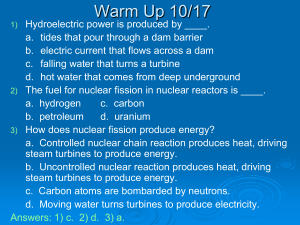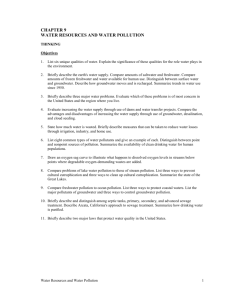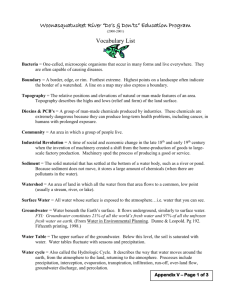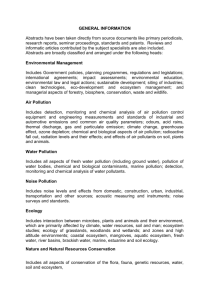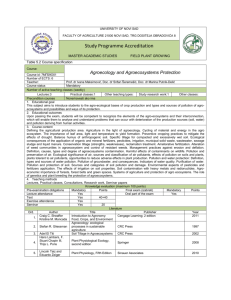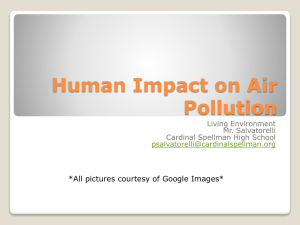4.3 Water, Air, & Land Resources
advertisement
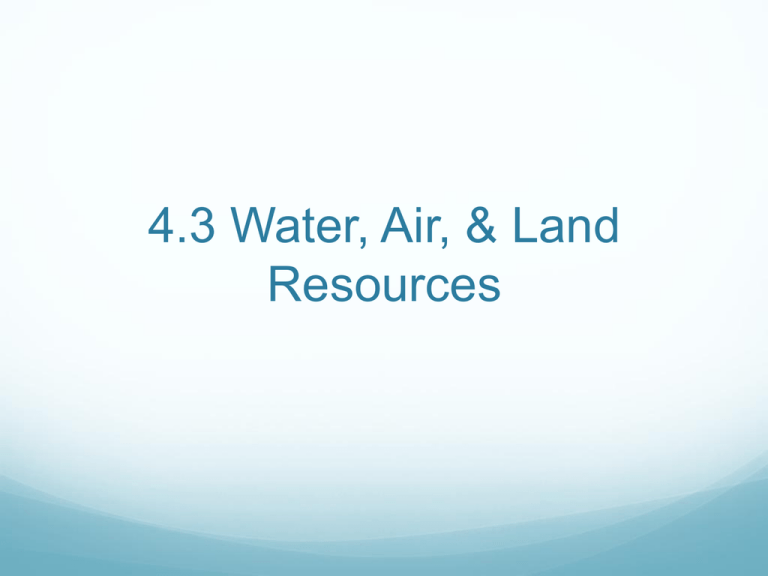
4.3 Water, Air, & Land Resources The Water Planet Water covers over half of Earth’s surface (71%) Saltwater Freshwater < 1% of the water on Earth is useable to us Pollution of Freshwater Point Source Pollution Comes from a known source or a specific location Examples Factory Pipes Sewage treatment plant Nonpoint Source Pollution Does not have a particular point of origin Examples Runoff often carries nonpoint source pollution Rainfall Snow Pollution in the Air The chemical make up of the atmosphere helps to maintain life on Earth Atmosphere shields Earth from solar radiation Fossil Fuel combustion is the major source of air pollution Cars Coal Oil burning power plants Pollution in the Air continued… CFCs (Chlorofluorocarbons) destroy ozone layer Problem? Increase health problems CO2 amts. in the atmosphere have increased since industrialization started in the 19th century Carbon cycle has since been altered which in return leads to unnatural warming of the atmosphere Global Warming Land Resources Earth’s land provides soil & forests, as well as mineral & energy resources Irrigations Farming new land (+) Depleting groundwater (-) Salinization (-) build up of salts in the soil Mining (~500,000 in US) Essential for mineral resources (+) Messes up Earth’s surface (-) Destroys vegetation (-) What are land resources? Soil to grow food Forests for lumber, furniture, paper Land Resources continued… Land for Disposal Sites Landfills When done correctly little damage is done When done incorrectly harmful wastes leak into the soil and groundwater Clearing of trees by clear-cutting = damaged land Removing all the trees from a forest Destroys ecosystems Motion Accelerates Erosion Activity 4.4 Protecting Resources How to Protect What We Have Water 1970S the Federal Govn’t passed several laws to prevent or decrease pollution & protect resources 1972 Clean Water Act 1974 The Safe Drinking Water Act Air 1970 Clean Air Act (most important air pollution law) Increased use of alt. energy sources help clear the air Protecting the land resources involves preventing pollution & managing land resources wisely. How You Can Prevent Water Pollution How You Can Save Energy • Never pour household chemicals down the drain / toilet (cleaners, paints, thinners) • Recycle • Never dump toxic chemicals in the gutter into the ground • Use energy – saving fluorescent bulbs • Don’t put things that contain hazardous substances in the trash (batteries) • Look for the Energy Star sticker when you buy electric products • Avoid using hazardous substances in the beginning • Let the sun in to warm rooms • Turn off lights when you leave the room. Turn off radio, TV, or computer when not in use Making an Oil Slick

